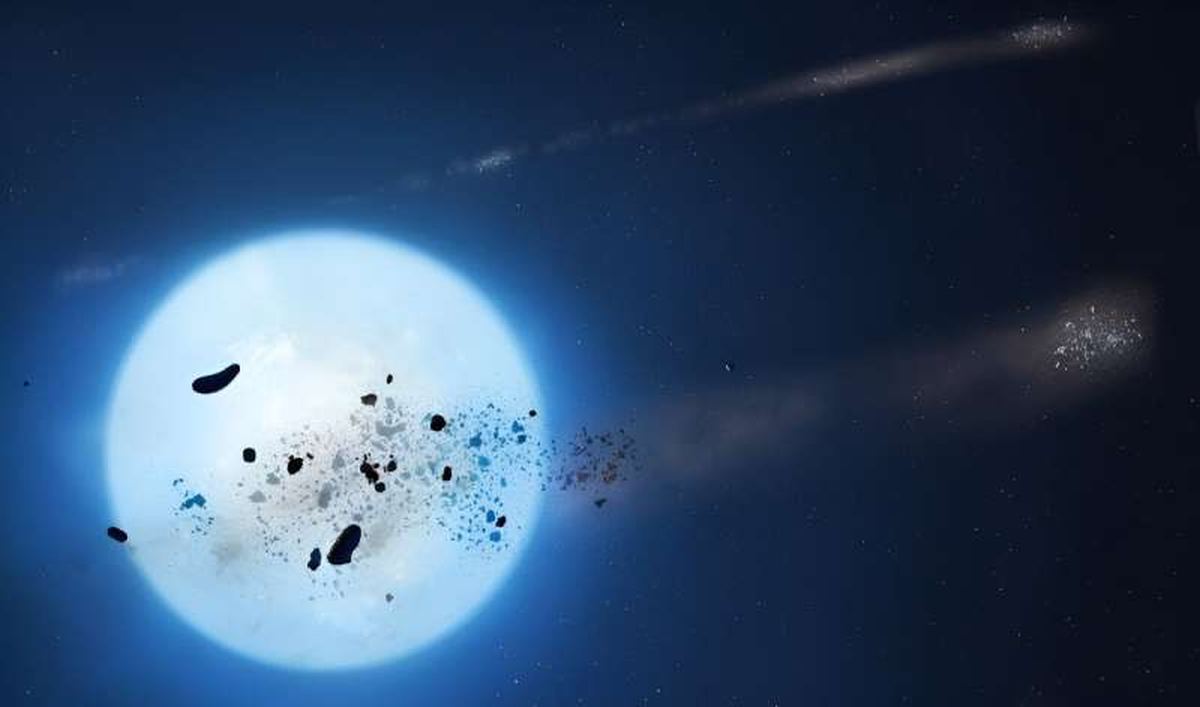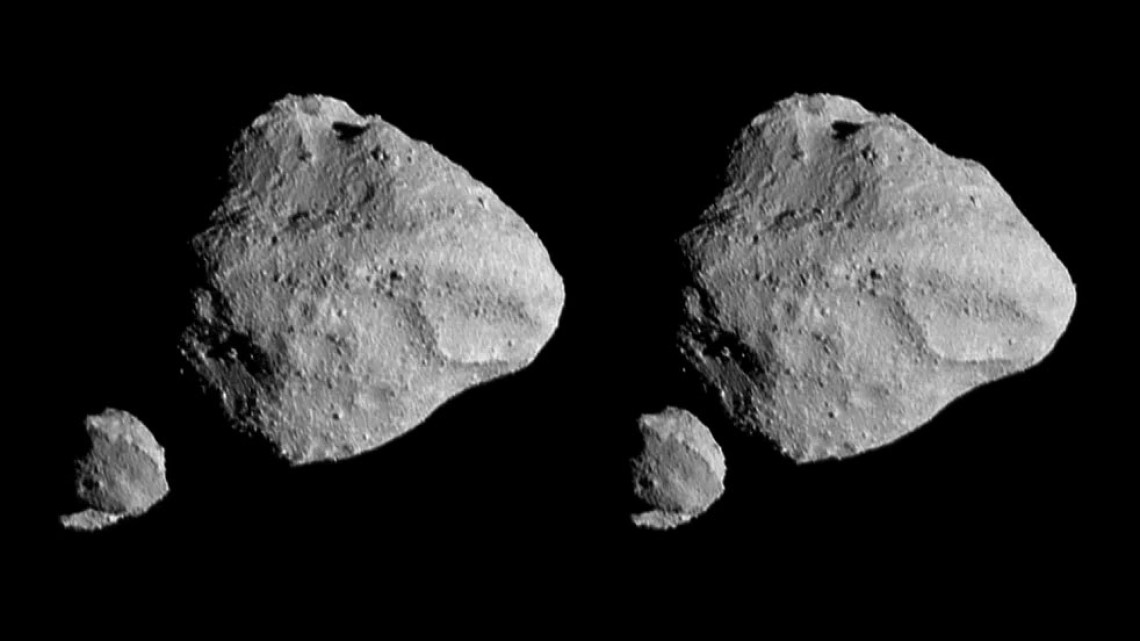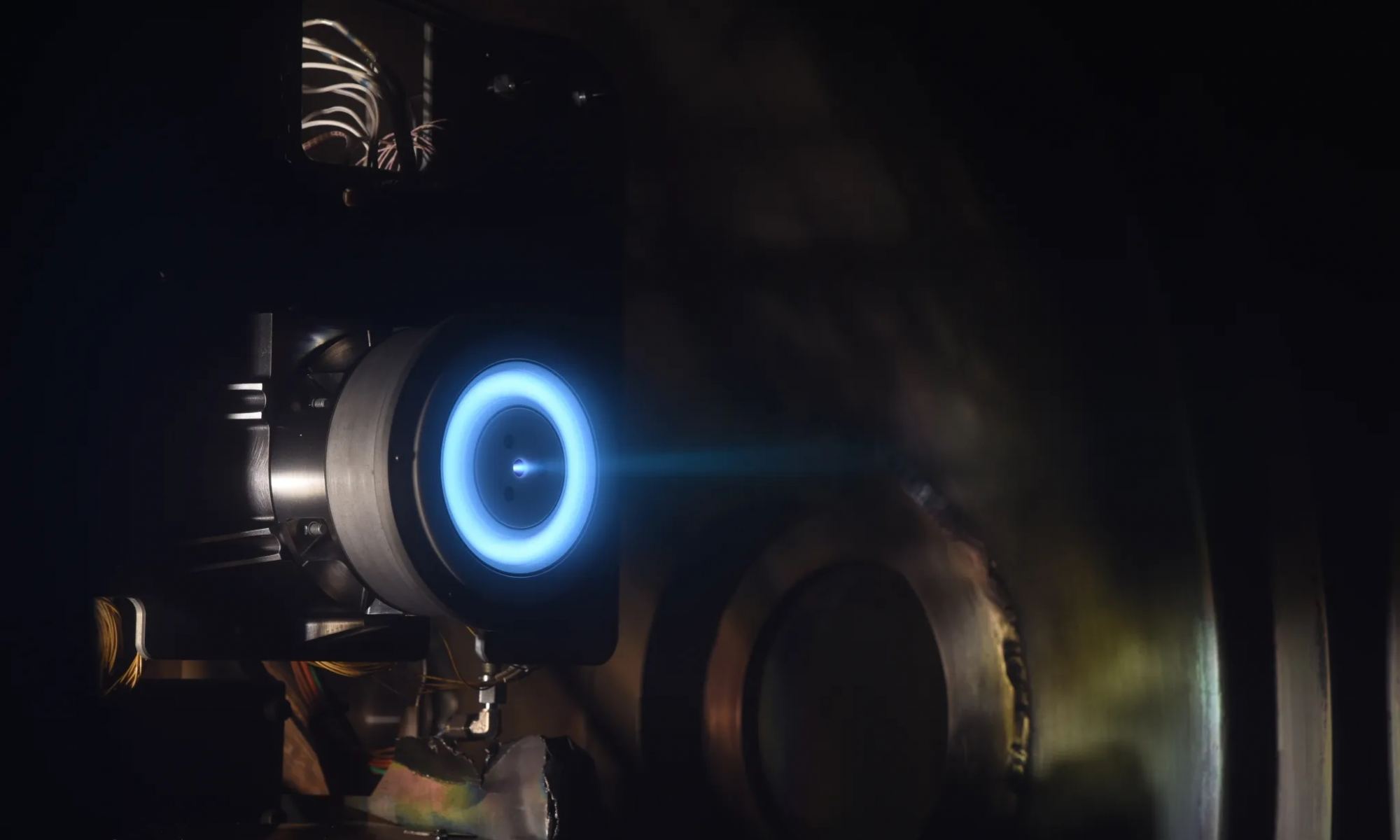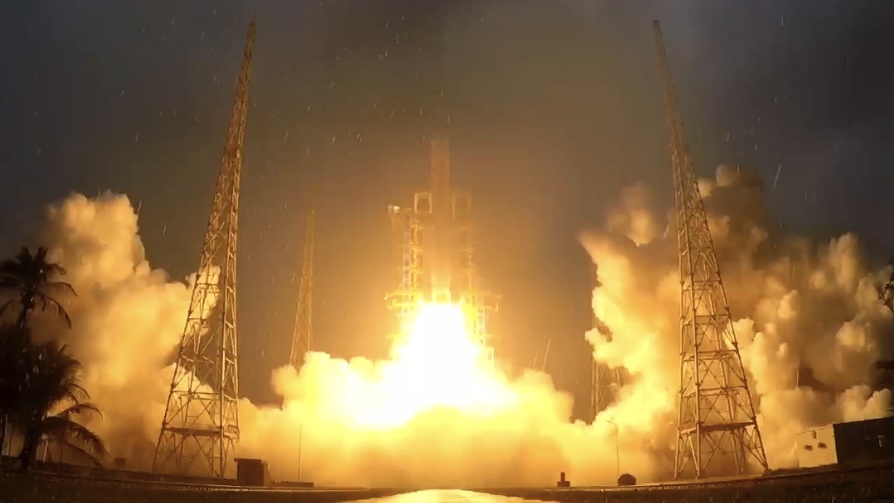On May 10th, 2024, people across North America were treated to a rare celestial event: an aurora visible from the Eastern Seabord to the Southern United States. This particular sighting of the Northern Lights (aka. Aurora Borealis) coincided with the most extreme geomagnetic storm since 2003 and the 27th strongest solar flare ever recorded. This led to the dazzling display that was visible to residents all across North America but was also detected by some of Ocean Networks Canada‘s (ONC) undersea sensors at depths of almost three kilometers.
Continue reading “That Recent Solar Storm Was Detected Almost Three Kilometers Under the Ocean”Astronomers Discover the Second-Lightest “Cotton Candy” Exoplanet to Date.
The hunt for extrasolar planets has revealed some truly interesting candidates, not the least of which are planets known as “Hot Jupiters.” This refers to a particular class of gas giants comparable in size to Jupiter but which orbit very closely to their suns. Strangely, there are some gas giants out there that have very low densities, raising questions about their formation and evolution. This is certainly true of the Kepler 51 system, which contains no less than three “super puff” planets similar in size to Jupiter but is about one hundred times less dense.
These planets also go by the moniker “cotton candy” giants because their density is comparable to this staple confection. In a recent study, an international team of astronomers spotted another massive planet, WASP-193b, a fluffy gas giant orbiting a Sun-like star 1,232 light-years away. While this planet is roughly one and a half times the size of Jupiter, it is only about 14% as massive. This makes WASP-193b the second-lightest exoplanet observed to date. Studying this and other “cotton candy” exoplanets could provide valuable insight into how these mysterious giants form.
Continue reading “Astronomers Discover the Second-Lightest “Cotton Candy” Exoplanet to Date.”White Dwarfs are Often Polluted With Heavier Elements. Now We Know Why

When stars exhaust their hydrogen fuel at the end of their main sequence phase, they undergo core collapse and shed their outer layers in a supernova. Whereas particularly massive stars will collapse and become black holes, stars comparable to our Sun become stellar remnants known as “white dwarfs.” These “dead stars” are extremely compact and dense, having mass comparable to a star but concentrated in a volume about the size of a planet. Despite being prevalent in our galaxy, the chemical makeup of these stellar remnants has puzzled astronomers for years.
For instance, white dwarfs consume nearby objects like comets and planetesimals, causing them to become “polluted” by trace metals and other elements. While this process is not yet well understood, it could be the key to unraveling the metal content and composition (aka. metallicity) of white dwarf stars, potentially leading to discoveries about their dynamics. In a recent paper, a team from the University of Colorado Boulder theorized that the reason white dwarf stars consume neighboring planetesimals could have to do with their formation.
Continue reading “White Dwarfs are Often Polluted With Heavier Elements. Now We Know Why”SpaceX Shows Off Its New Extravehicular Activity Suit
In February 2022, SpaceX and entrepreneur/philanthropist Jared Isaacman (commander of the Inspiration4 mission) announced they were launching a new program to “rapidly advance human spaceflight capabilities” while supporting important charitable and humanitarian causes here on Earth. It’s called the Polaris Program. In a recent press release, SpaceX revealed the spacesuits its Polaris astronauts will be wearing (up top) and described the research crews will conduct during the program’s three human spaceflight missions – the first of which is scheduled to launch this summer!
Continue reading “SpaceX Shows Off Its New Extravehicular Activity Suit”We Need to Consider Conservation Efforts on Mars

Astrobiology is the field of science that studies the origins, evolution, distribution, and future of life in the Universe. In practice, this means sending robotic missions beyond Earth to analyze the atmospheres, surfaces, and chemistry of extraterrestrial worlds. At present, all of our astrobiology missions are focused on Mars, as it is considered the most Earth-like environment beyond our planet. While several missions will be destined for the outer Solar System to investigate “Ocean Worlds” for evidence of life (Europa, Ganymede, Titan, and Enceladus), our efforts to find life beyond Earth will remain predominantly on Mars.
If and when these efforts succeed, it will have drastic implications for future missions to Mars. Not only will great care need to be taken to protect Martian life from contamination by Earth organisms, but precautions must be taken to prevent the same from happening to Earth (aka. Planetary Protection). In a recent study, a team from the University of New South Wales (UNSW) in Sydney, Australia, recommends that legal or normative frameworks be adopted now to ensure that future missions do not threaten sites where evidence of life (past or present) might be found.
Continue reading “We Need to Consider Conservation Efforts on Mars”China is Going Back to the Moon Again With Chang'e-6
On Friday, May 3rd, the sixth mission in the Chinese Lunar Exploration Program (Chang’e-6) launched from the Wenchang Spacecraft Launch Site in southern China. Shortly after, China announced that the spacecraft separated successfully from its Long March 5 Y8 rocket. The mission, consisting of an orbiter and lander element, is now on its way to the Moon and will arrive there in a few weeks. By June, the lander element will touch down on the far side of the Moon, where it will gather about 2 kg (4.4 lbs) of rock and soil samples for return to Earth.
Continue reading “China is Going Back to the Moon Again With Chang'e-6”China Creates a High-Resolution Atlas of the Moon
Multiple space agencies are looking to send crewed missions to the Moon’s southern polar region in this decade and the next. Moreover, they intend to create the infrastructure that will allow for a sustained human presence, exploration, and economic development. This requires that the local geography, resources, and potential hazards be scouted in advance and navigation strategies that do not rely on a Global Positioning System (GPS) developed. On Sunday, April 21st, the Chinese Academy of Sciences (CAS) released the first complete high-definition geologic atlas of the Moon.
This 1:2.5 million scale geological set of maps provides basic geographical data for future lunar research and exploration. According to the Institute of Geochemistry of the Chinese Academy of Sciences (CAS), the volume includes data on 12,341 craters, 81 impact basins, 17 types of lithologies, 14 types of structures, and other geological information about the lunar surface. This data will be foundational to China’s efforts in selecting a site for their International Lunar Research Station (ILRS) and could also prove useful for NASA planners as they select a location for the Artemis Base Camp.
Continue reading “China Creates a High-Resolution Atlas of the Moon”Dinkinesh's Moonlet is Only 2-3 Million Years Old

Last November, NASA’s Lucy mission conducted a flyby of the asteroid Dinkinish, one of the Main Belt asteroids it will investigate as it makes its way to Jupiter. In the process, the spacecraft spotted a small moonlet orbiting the larger asteroid, now named Selam (aka. “Lucy’s baby”). The moonlet’s name, an Ethiopian name that means “peace,” pays homage to the ancient human remains dubbed “Lucy” (or Dinkinish) that were unearthed in Ethiopia in 1974. Using novel statistical calculations based on how the two bodies orbit each other, a Cornell-led research team estimates that the moonlet is only 2-3 million years old.
Continue reading “Dinkinesh's Moonlet is Only 2-3 Million Years Old”What Can AI Learn About the Universe?
Artificial intelligence and machine learning have become ubiquitous, with applications ranging from data analysis, cybersecurity, pharmaceutical development, music composition, and artistic renderings. In recent years, large language models (LLMs) have also emerged, adding human interaction and writing to the long list of applications. This includes ChatGPT, an LLM that has had a profound impact since it was introduced less than two years ago. This application has sparked considerable debate (and controversy) about AI’s potential uses and implications.
Astronomy has also benefitted immensely, where machine learning is used to sort through massive volumes of data to look for signs of planetary transits, correct for atmospheric interference, and find patterns in the noise. According to an international team of astrophysicists, this may just be the beginning of what AI could do for astronomy. In a recent study, the team fine-tuned a Generative Pre-trained Transformer (GPT) model using observations of astronomical objects. In the process, they successfully demonstrated that GPT models can effectively assist with scientific research.
Continue reading “What Can AI Learn About the Universe?”Next Generation Ion Engines Will Be Extremely Powerful

During the Space Race, scientists in both the United States and the Soviet Union investigated the concept of ion propulsion. Like many early Space Age proposals, the concept was originally explored by luminaries like Konstantin Tsiolkovsky and Hermann Oberth – two of the “forefathers of rocketry.” Since then, the technology has been validated repeatedly by missions like the Deep Space-1 (DS-1) technology demonstrator, the ESA’s Smart-1 lunar orbiter, JAXA’s Hayabusa and Hayabysa 2 satellites, and NASA’s Dawn mission.
Looking to the future of space exploration, researchers at the NASA Glenn Research Center (GRC) have been busy developing a next-generation ion engine that combines extreme fuel efficiency with high acceleration. These efforts have led to the NASA-H71M sub-kilowatt Hall-effect thruster, a small spacecraft electric propulsion (SSEP) system that will enable new types of planetary science missions. With the help of commercial partners like SpaceLogistics, this thruster will also be used to extend the lifetimes of spacecraft that are already in orbit.
Continue reading “Next Generation Ion Engines Will Be Extremely Powerful”





